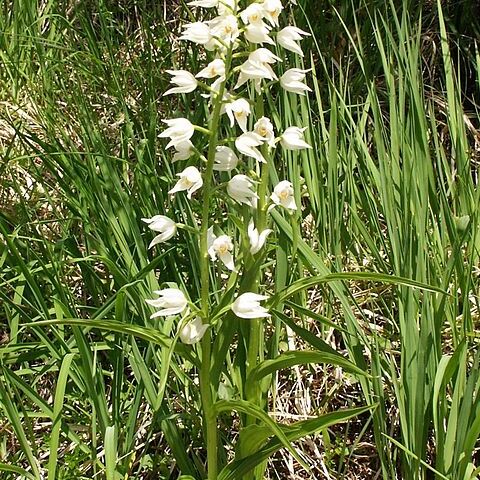Herbs, terrestrial, autotrophic or holomycotrophic. Rhizome creeping, cylindric, slender; roots fasciculate, filiform, fleshy, usually numerous though few in holomycotrophic species. Stem erect, unbranched, leafy, with 1 to a few subcymbiform or cylindric basal sheaths. Leaves alternate, plicate, sessile, directly sheathing stem at base, reduced to membranous sheaths in holomycotrophic species. Inflorescence terminal, racemose, many or few flowered, rarely 1-flowered; proximal floral bracts foliaceous and usually longer than flowers, distal ones much shorter. Flowers resupinate, suberect, weakly spreading and campanulate, or rarely widely spreading, white, pink, or yellow; ovary slightly twisted, glabrous. Sepals free, similar to each other, subequal. Petals slightly shorter than sepals, ± connivent with sepals; lip adnate to base of column, 2-partite or rarely simple and not distinct from petals in peloric forms; hypochile with erect lateral lobes embracing column, saccate or with a short spur at base; epichile spreading, ovate-elliptic, apex obtuse or acute; disk with 3-7 longitudinal lamellae, or unornamented in peloric forms. Column erect, usually with 2 narrow lateral wings; anther erect, hinged, 2-locular; pollinia 2, each 2-partite, granular-farinaceous, lacking caudicles and viscidia; stigma concave, rounded; rostellum inconspicuous or absent. Capsule erect.
More
Herbs, perennial, achlorophyllous. Roots fleshy, slender, scattered along slender rhizome. Stems leafy. Leaves several, alternate; blade spreading, plicate, or reduced to appressed sheathing bracts. Inflorescences terminal, solitary spikes, lax; floral bracts often foliaceous, large to minute, scarious distally. Flowers few–many, resupinate, sessile, showy; lip white with yellow markings, divided by median constriction, saccate, distal end with fleshy parallel adaxial lamellae; pollinaria absent; pollinia 2; viscidia absent. Fruits capsules.

